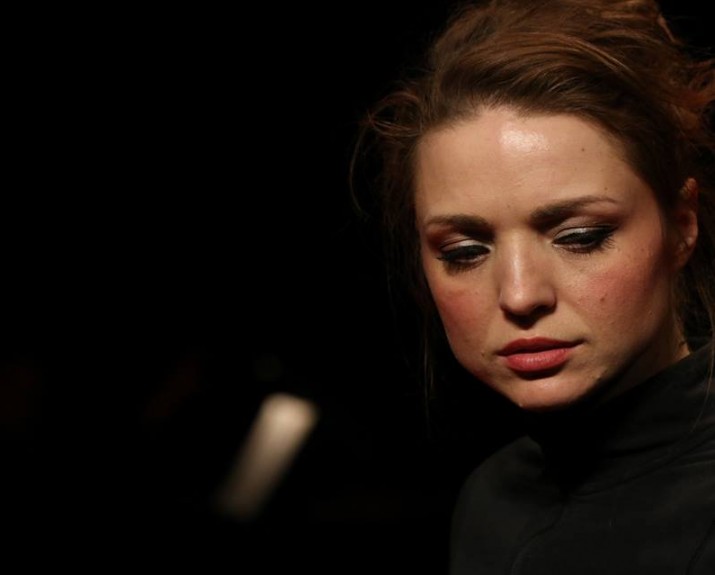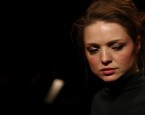
CARMENGeorges Bizet
What could be noticed at a first glance was a visual minimalism on the set – the only thing the set design consisted of was a large red circle on the floor, taking up the whole of the space and where the entire action took place. Surrounded by the audience from the three sides and the orchestra in the background, it makes an almost hermetically closed whole. The set minimalism is duly accompanied by other segments, starting from the number of characters. (…) there is no splendour or glitter, dance, fanciful costumes and everything else that is expected from an opera. Instead, the focus is on the music, characters and their relationships. (…) Another thing quite unusual for opera is the evident bodily engagement of singers, which could have been anticipated with the existing function of choreography director. In this function, Selma Banich has subtly emphasised the relations of characters through movement, specific positions in space and physical contact.
Nermina Mehić, To dare, Plesna scena.hr
According to the idea of Marin Blažević, Filip Fak has done a great work in reducing Bizet’s opera to the indispensable. The selected numbers of the magnificent opera score he instrumentalised for five stringed instrument players, the flute, the oboe, the clarinet, the bassoon, percussion instruments and the piano, from which he conducted the performance. It was a shockingly beautiful moment when the habanera was sung and played (!) in total darkness. A perfect experience of blind love.
Branimir Pofuk, Bizet’s “Carmen”- powerful and chamber, Večernji list



